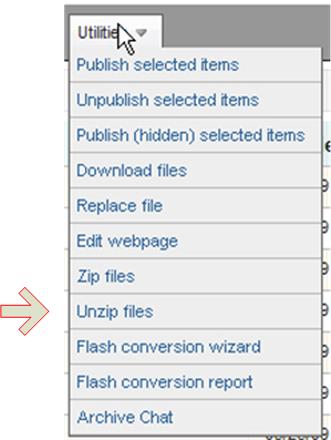A number of authoring tools like SoftChalk Lesson Builder (www.softchalk.com), Adobe Flash (en.wikipedia.org/wiki/Adobe_Flash), and other technologies enable instructors to create image maps, flashcards, self-assessments, crossword puzzles, and other automated and semi-interactive elements.
When uploading to the Files & content area of the K-State Online/Axio Learning management system, generally the digital object is zipped and uploaded as a zipped file. (The zipped file contains the images, the animations, and all files that provide the functional elements of the digital learning object.)
Then the zipped folder is unzipped. The main .html file is published, and all other files in that same folder are “Published (Hidden).” This allows the main file to call on the various backup files (such as .swf or “Shockwave Flash” animation files (en.wikipedia.org/wiki/SWF) to ensure playability of all the elements.

The back-end coding in K-State Online/Axio Learning disallows the uploading of the index.html file, which is the main file that is published to the students. Even when all the elements are zipped into a file, the index.html is not included in the upload. That file has to be uploaded manually and independently, and renamed index1.html or index_1.html or some other name.
 Once that file is successfully uploaded and published (and the other files are “Published (Hidden),” the digital learning object should display in the learning management system.
Once that file is successfully uploaded and published (and the other files are “Published (Hidden),” the digital learning object should display in the learning management system.
Addendum: The reason why the index.html file cannot be uploaded directly is because an index.html file is used internally by the system to display the list of files in the folder as you’re looking at the content. The system designers cannot allow users to replace that file.